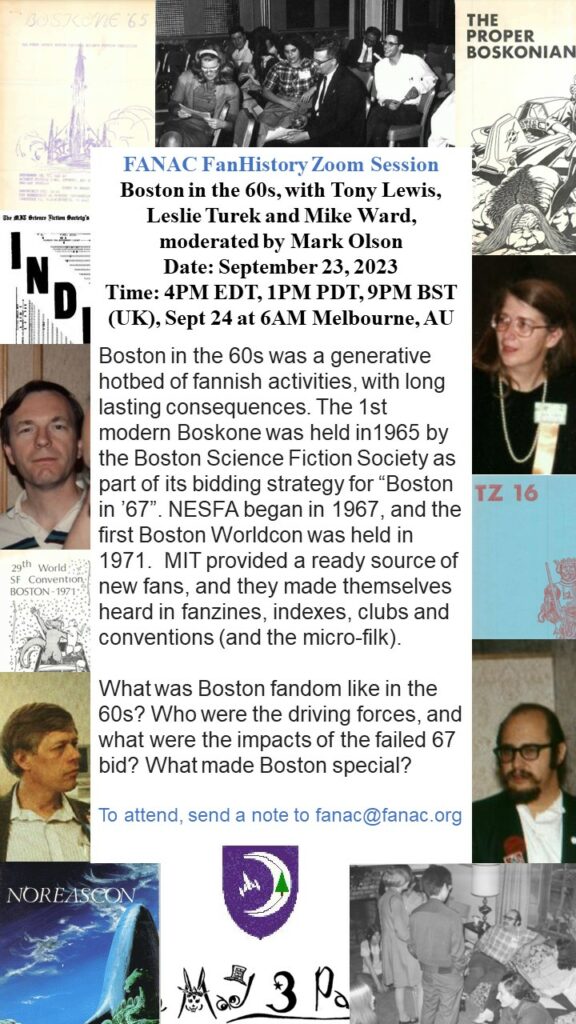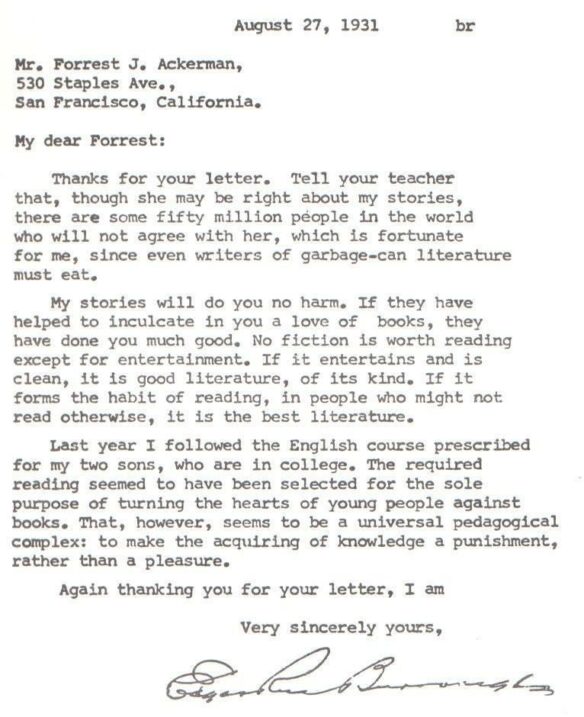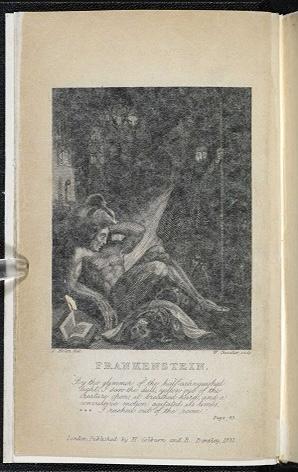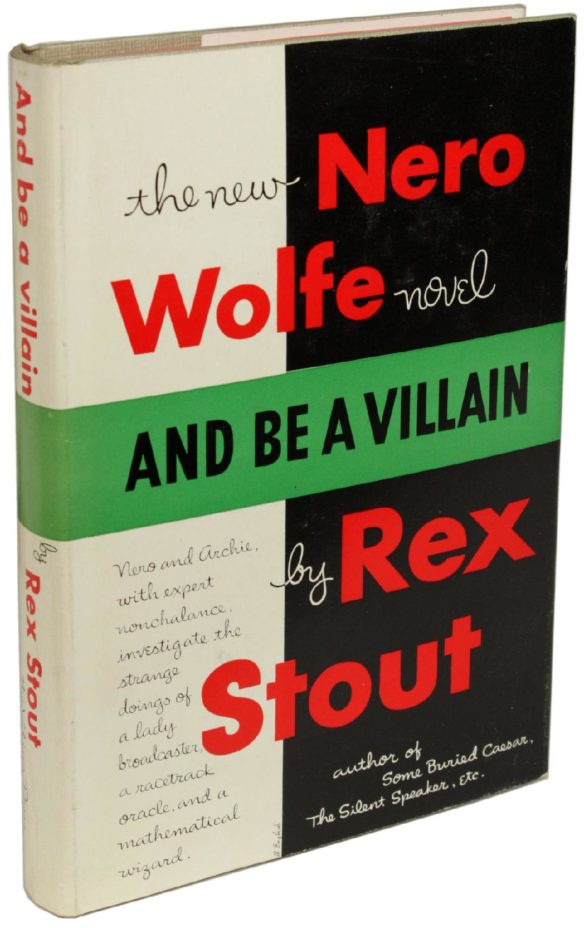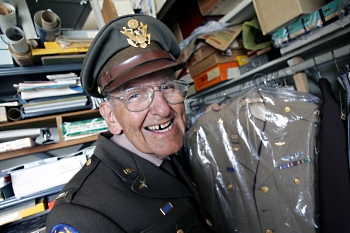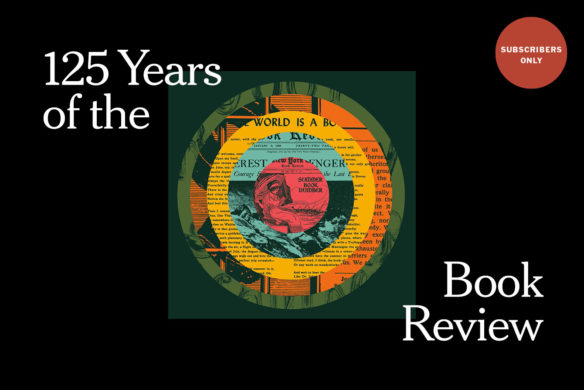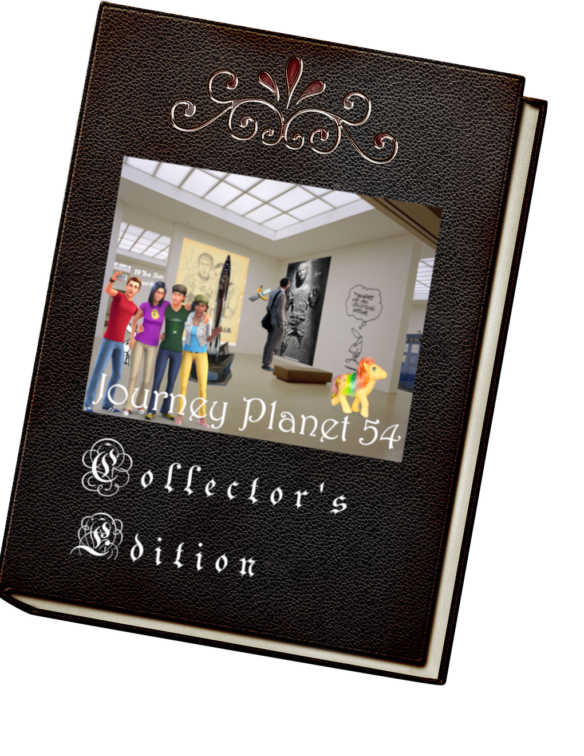
By William F. Wu: My longtime friend Michael D. Toman died at home of natural causes in the last week of August. I knew him for forty-nine years. He was extremely kind and generous, very well educated, as well as being a brilliant, modest, and considerate friend.
His tastes were wide: Classical literature and of course science fiction and fantasy from Frankenstein by Mary Shelley to the most recent editions of Analog, Asimov’s, and The Magazine of Fantasy and Science Fiction. In casual conversations, he might reference the ghost stories of M.R. James and the work of Tolstoy (with the opinion that Tolstoy was unfairly denied a Nobel Prize), then express a thought connecting them to a work by Robert A. Heinlein or Lewis Carroll or John Updike. In music, he was well versed, as a baby boomer would be, in classic rock, but he also loved opera and blues – a range of taste I find to be rare. He often – one approving neighbor said almost nightly – listened to classical music. Movie soundtracks were another favorite and he would sometimes describe instrumental moments he loved using musical terms I never learned. Soundtracks by Miklós Rósza and Elmer Bernstein were among his favorites. He told anecdotes about the improvisations of early bluesmen as easily as referencing a Beatles song.
Michael – he eschewed “Mike” many years ago and I’m writing “eschewed” because he would find it funny – “Gesundheit!” – grew up in Lansing, Michigan, and attended Michigan State University for his bachelor’s degree. While I was born and raised in the Kansas City area, I have multi-generational roots in Michigan. My mother and her mother grew up in Ann Arbor, Mich., and attended the University of Michigan, where my parents met. I attended that university, got my bachelor’s degree in 1973, and took a year off from school before starting grad school in 1974.
Michael attended the Clarion Science Fiction Writers Workshop in 1973, which was also a for-credit class at Michigan State at that time. Among the people he met there was Alan Brennert, who became a lifelong friend. Before starting my grad school classes at Michigan in the fall of 1974, I attended Clarion that summer. One day, as I was walking up the hall in a dormitory, I glanced into the open doorway of a room where various manuscripts were on a table, available to read. A stranger was standing in the room, looking over the manuscripts, and I wondered why someone outside the workshop was in there.
It was Michael, of course, and he had come from Western Michigan University in Kalamazoo, where he was studying for a master’s degree in library science, to visit that week’s instructor. After all these years, I don’t remember which instructor that was, though it was either Robin Scott Wilson the first week or Harlan Ellison the third week. He also came back to see Damon Knight and Kate Wilhelm in the final two weeks. We first met in the instructor’s room one evening with some other attendees.
I was impressed. Michael had a short story, “Shards of Divinity,” in the anthology Science Fiction Emphasis #1, edited by David Gerrold. I had bought the anthology, which had just come out in April of that year, and remembered the story. Michael was the first published author in my generation I met after reading his work, being about a year-and-a-half older than I am. He was friendly and funny. When I told him I had read that story of his, and liked it, he was surprised and modest, and covered his reaction with a joke about “Trekkies.” I had been writing stories all my life, but I had just started taking a professional approach and submitting stories during the previous twelve months. He had accomplished what I was aiming for.
Michael and I became friends gradually over time. During the following school year, I went to my first sf con. I took a girlfriend to Kalamazoo, where Harlan Ellison was the guest of honor. I had enjoyed meeting Harlan – including his highly disapproving critique of a failed story I wrote to his assignment about “where lost things go” – and visited with Michael and Harlan at the con. At another con that year, a ConFusion in Ann Arbor, I crossed paths with Michael again. I took my current girlfriend and Michael observed that I was wearing the same shirt as the last time he had seen me, but adding with a kind of humor I would come to know well, “same shirt, different girl.” It was funny but I had some explaining to do.
Subsequently Michael received his master’s degree and began working as a librarian at Lansing Community College. I was in a combined master’s and doctoral degree program in American Culture. We continued to cross paths at nearby cons and also the Worldcon in Kansas City, Missouri, in 1976. Eventually we visited back and forth between Lansing and Ann Arbor, discovering many more common interests including the original King Kong movie and alternate history fiction – and he knew more about both subjects than I did. We corresponded more often than we saw each other. Back then, when a “long-distance call” cost extra money, we saved pennies by not using the phone.
When I applied, in 1977, for affiliate membership in Science Fiction Writers of America on the basis of a story published in a British anthology, Michael was the membership chairman. I received a letter of acceptance from him in which the body was informative and professional in tone. In a P.S., he added a humorous personal note as one friend to another in a style that he would use in correspondence with just about everyone for the rest of his life.
By 1978, we decided to go to the 36th World Science Fiction Convention, also known as Iguanacon II, in Phoenix together and share a motel room. We found a place much cheaper than the high-priced Hyatt Regency convention hotel. This motel was in walking distance of the con and we met another motel guest who was a fan. She went by Mickey and said she had never met published writers before. We enjoyed visiting with her and were careful to explain that our careers were still limited. At that con, we met writer Ed Bryant, who was editing an anthology at the time (he had already rejected a story of mine). We also met writers Pat Murphy and Cherie Wilkerson, who had attended Clarion that summer. They also became longtime friends.
At this con, we also learned of more science fiction and fantasy writer friends of our age group living in the Los Angeles area. As always, in visiting with people at the con, Michael was modest about being a published writer and always enjoyed complimenting and encouraging other writers whether they were published or not. He liked sharing information when he could about new short story markets and sometimes comments he had received or heard about from various editors that might reveal leanings they might have. This, too, continued for the rest of his life.
I had a year to go in grad school, though I didn’t know exactly when I would finish – I was about to start my doctoral dissertation, which I completed just about twelve high-stress months later. After all this time in school, I had lost interest in becoming a college professor somewhere. I knew I only wanted to write, though how I’d make a living wasn’t clear. Michael took part in a strike at the library, where he had a stressful split shift every day of work. Over time after the strike, the woman in charge gradually reduced the number of working hours of every employee who had taken part in the strike and was successfully forcing them to find work elsewhere.
At this 1978 Worldcon, we complained and commiserated about our lot and meandered toward the idea of moving to Los Angeles together after I had my doctoral degree and when he was ready to escape the stress and uncertainty of his library job.
Also that year, Michael had a story published in an anthology in France. It appeared as “Contre-odyssée”in translation and was “Against the Odds” in the original English. He was always disappointed that he was never able to get it accepted in the U.S. Two years earlier, “Shards of Divinity” had appeared as “Quelques miettes de divin” in a French anthology. In 1978 I had another short story published in a British anthology that was a sequel to the one in which my first professional sale had appeared in 1977. In the U.S., our publishing histories were Michael’s “Shards of Divinity” and a short story of mine that had appeared in a regional magazine in 1974. That publication was not deemed sufficient as a credential for SFWA membership. Despite writing and submitting our work often to U.S. magazines and anthologies, we each had two stories in European publications that outnumbered our individual stories in the U.S. That was an irony we shared with considerable annoyance.
During these years, Michael became friends with fellow Michigan State alum Joan Hunter Holly. Her first sf novel was published in 1959. Joan was down-to-earth and always supportive of his writing efforts. She lived in Lansing and ultimately had thirteen novels published and a number of short stories. Michael had a particular liking for her novel The Flying Eyes, in which aliens first appear over Spartan Stadium at Michigan State. She was SFWA treasurer in the late ’70s and Michael worked with her in his role as membership chairman. Through her, he met longtime writer Lloyd Biggle and he introduced me to both of them. Joan was a heavy cigarette smoker and died at the age of fifty, in 1982, from lung cancer. This hit Michael very hard. He spoke of her at times for the rest of his life.
In 1978, George Scithers, the editor of Isaac Asimov’s Science Fiction Magazine, as it was titled at the time, accepted a novelette of mine. This gave me the credential to become a full member of SFWA, for which I got another letter from Michael with another dose of humor. The story was published the following year. Though our progress was slow, we felt optimistic about the direction of our writing careers.
I finished the rough draft of my dissertation in August of 1979 and the prospect of leaving my grad school life behind was becoming real. On Labor Day weekend of 1979, Michael came to Ann Arbor with some fan friends from Michigan State and one of them drove us down to Louisville to NorthAmeriCon ’79, the second North American Science Fiction Convention because the Worldcon was in Brighton, England, that year. The trip was an experience common to all of us: science fiction writers and fans saving money by sharing gas and a room, including some of us sleeping on the floor in those days when our bodies were young. At that con, we met writer Tim Sullivan, who became a longtime friend, and writer and orchestral composer Somtow Sucharitkul. Tim and Somtow lived in Boca Raton, Florida.
At one point, I was talking to one of them in the dealers room when someone interrupted, wanting to introduce another individual who lived in Boca Raton. I drifted away and learned much later that the new arrival was Diana G. Gallagher, at that time an unpublished writer working on an sf novel. While I didn’t meet her at that time, we would eventually get married.
Michael and I reaffirmed our plan to leave the long Michigan winters behind for Southern California. Knowing a number of writers already in the L.A. area – including Alan Brennert — made it a much more inviting location than any place where neither of us knew anyone. I received my doctoral degree in December of 1979 and drove my old, bought-used, gas-guzzling, but large sedan to pick him up in East Lansing in June of 1980.
Michael always hated driving. He never was in an accident or received a traffic citation. Even so, he would take a bus, ask a friend, or walk if possible – anything but drive. He owned cars at several times in his life but still avoided driving if he could. Because he never had an explanation (“I just don’t want to”), I had to accept this, as did all his friends. So for our long trip, I agreed to do most of the driving and he agreed to spell me occasionally. We crammed the big car full of our stuff and departed late in the day.
On the second day, we had an experience Michael loved describing. I had been driving for hours in an overcast but dry day as we went south in Indiana. He agreed to take over so I could rest. As soon as he got behind the wheel and returned to the Interstate, a downpour began. He was both annoyed and hilarious: “You see what happens when I drive? You see?” He was laughing and serious at the same time. “You drive for hours and it doesn’t rain. You see?” He had more to say as lightning and thunder added to the storm.
Even so, he was a good sport and drove through the downpour for about an hour. At that point, at his request, I took over again. In minutes, the rain stopped. Then the clouds parted and I was driving in sunshine. I can’t remember exactly what Michael said in this moment, but he went on for a while – again, funny and serious at the same time.
We knew even then that when we would tell the story, listeners would assume, even while enjoying the anecdote, that we were exaggerating – especially given that were professional storytellers. In fact, the experience was exactly as I described. The fact that people didn’t necessarily believe it in full added both to Michael’s enjoyment of recounting the events and also to his annoyance about it. He told the story off and on for many years.
After a few days with my parents in the K.C. area, we drove into the Colorado Rockies. By prior arrangement, we took part in a weeklong Milford workshop in Telluride. Milford had begun in the 1950s and set the workshop pattern that led to Clarion. George R.R. Martin attended; we knew him from cons in the Midwest when he lived in the Chicago area. P.C. Hodgell, a Clarion-mate and good friend of mine, took part. We met Connie Willis, who became a longtime friend, and Kevin M. O’Donnell, Jr., who also became a good friend.
At the end of the week, Michael and I continued on our way. At one point, still on a winding mountain road, I needed Michael to drive for a while. He griped even more this time, in part because the lenses in his glasses had come loose and were held in place by clear tape – which narrowed his field of vision. I took over again as soon as I could. We reached Grand Junction in the evening and got a motel room.
Ready to leave the intensity of Milford and stress of driving behind for a while, we went to see a movie at a local theater – which happened to be showing The Shining. We knew it was based on a Stephen King novel but not that it was set in the Rockies. Nor was watching it a great way to relieve stress. After it was over, we laughed at the irony. And finally found time to relax.
In the Los Angeles area, we first stayed with Jim and Valerie Ransom, friends Michael had known in Michigan. Their kindness and patience with us can never be repaid. I found a part-time job at the L.A. City Hall with the help of Garrett Hongo, an old friend from my grad school days in Ann Arbor, as Michael applied for library jobs. We also house-sat for another old friend of Michael’s, as well as for Cherie Wilkerson and later a cousin of mine when they went out of town on long trips. One month we house-sat for the parents of a former girlfriend of mine – in fact, the girlfriend about whom Michael had observed “Same shirt, different girl” six years before.
I also attended that year’s Worldcon, which was in Boston. Someone – almost certainly either Tim Sullivan or Somtow Sucharitkul — introduced me to Diana G. Gallagher. She and I started a correspondence and sometimes talked on the phone throughout the following six months.
In January of 1981 Michael and I moved to an apartment complex with some of the other writers we knew, sometimes including Theodore Sturgeon. Michael started working for Harlan Ellison full time – each weekday I drove us to Harlan’s house where Michael, in librarian mode, typed cards to catalog Harlan’s immense book collection. Meanwhile, having received interest in my doctoral dissertation by a publisher of scholarly work, I sat in the art-deco dining pavilion and revised my dissertation. We had known Harlan for some years, of course, but these months deepened our friendship with him. During this time, Harlan accepted a story by Michael titled, “Quarto,” for The Last Dangerous Visions. It was a brilliant pastiche of work by Jorge Luis Borges but did not make the final cut for the upcoming edition as I write this in 2023.
That spring, I attended the first International Conference on the Fantastic in Boca Raton, Florida, in part because my friends Tim Sullivan and Somtow Sucharitkul would be there. I read a short story and presented a scholarly paper drawn from my dissertation. More importantly, I got better acquainted with Diana. As a result of this trip, a couple of months later, I moved in with her and her two kids in Boca Raton.
I was apologetic toward Michael for moving on and he assured me that pursuing a serious relationship with a woman made sense to him. About three months later, Michael got a well-paying job as a reference librarian at The Aerospace Corporation. I did not return to Southern California to live until 1987, though I visited several times. Michael and I continued to correspond and, with his new income, he often called while I was still counting pennies. These years were full of bonding experiences that anchored our long friendship in years to come.
Michael always took great pleasure in helping writer friends any way he could. Sometimes he would make sure someone knew about a potential market; many times he would write to libraries to recommend they buy certain books. He also wrote to strangers with compliments and suggestions. In a striking example, he made Alan Brennert aware of two short stories when Alan was on the staff of The Twilight Zone in the ’80s. One was “Dead Run” by Greg Bear and the other was my “Wong’s Lost and Found Emporium.” Both were adapted for The Twilight Zone. All his life, he found ways to promote fiction by friends and strangers.
In 1985, I came out to L.A. with a friend and, with Michael, we watched the weeklong filming of “my” Twilight Zone episode, written by Alan Brennert. That would not have happened without Michael.
At the same time, Michael’s writing grew less frequent. He continued to submit stories already written and a poem, “Seven Ways of Looking at Godzilla.” The latter remains unpublished and I’ve suspected science fiction editors might not have appreciated its literary side and that editors of literary work were put off by Godzilla. In that poem, there’s that surprisingly wide range of interest and knowledge again, similar to his interest in blues and opera mentioned earlier. He filled paper grocery sacks and file folders with story ideas in his tight scrawl.
In the ’80s and ’90s, he had short fiction published in Cold Shocks, edited by Tim Sullivan; Pulphouse: The Hardback Magazine, edited by Kristine Kathryn Rusch; Fantasy Tales; and Fantasy Macabre. Beginning in the early ’90s, he did not write fiction for roughly the last thirty years of his life. He often said, “It’s easier to manage other people’s careers than your own.” Even so, he always insisted that he wanted to write more.
In 1987 I moved with my wife Diana and stepdaughter Chelsea to a small town in the Antelope Valley called Lake Los Angeles. The lake has been dry for decades and it’s nowhere near Los Angeles, being in the high desert north of the San Gabriel Mountains. However, I could now drive to the near edge of the L.A. sprawl in about an hour. Starting in the fall of 1987, five of us who were already acquainted got together for sushi and plum wine roughly once a year until the recent pandemic. The other three are Alan Brennert, Michael Cassutt, and Robert Crais. Michael and I had met Bob Crais at Clarion in 1975 when we returned to visit Damon Knight and Kate Wilhelm. Michael Toman could not bring himself to try sushi and ordered his own dinner, but for many years we all enjoyed Japanese plum wine. Alan dubbed us Brothers of the Plum. I have always enjoyed the get-togethers and Michael in particular benefited from the camaraderie as his own writing efforts were left behind. He became more self-conscious than ever about telling new acquaintances that he was a published writer of fiction, but we always reminded him that he was.
In 1995, Michael became a reference librarian for the South Pasadena Public Library. It was, at last, the work he truly wanted: Working up lists of books for the library to buy, helping members of the public find books they sought, and also suggesting books they might like but didn’t know about. Bringing readers and books together brought him special satisfaction.
In the 2000s, Michael made editors of The Best American Short Stories aware of Harlan Ellison’s story “The Man Who Rowed Christopher Columbus Ashore.” This became Harlan’s first appearance in this series from the literary world. Out of all the countless ways in which Michael helped other writers, he took special pride in this.
His devotion to helping also included keeping friends up to date on many sorts of news related to creative work through correspondence and eventually email. In time, he became especially fond of File770.
Related to these activities, he treasured being a generally unknown yet influential “force for good,” as he phrased it – and said he would like to be remembered as such. Here it is. Those of us who benefited from his kindness will always remember.
And, of course, the personal side of our friendship continued. When I remarried in 2007, Michael was best man at the wedding.
Michael repeatedly gave me an intended compliment that revealed something about his long years of not writing fiction. He would say, “I really admire your discipline,” in writing my work. I always gave him the same answer, that I liked writing short stories and novels. It’s something I really want to do. I explained that I enjoyed writing and was not disciplining myself in the sense he meant. Granting that of course there have been days when I was not in the mood but had a deadline to meet, overall I enjoy the process of writing fiction – emphasis on “process.” Though he always enjoyed corresponding with people, often with cultural references and humorous observations, Michael reached the point where he truly did not enjoy writing fiction and could only have done so with the “discipline” of forcing himself to do so.
Sadly, that meant that no one will ever read the unwritten stories based on the many premises he scribbled down. Many combined unlikely concepts along the line of his story “Against the Odds,” in which an additional travail for Odysseus occurs when he finds himself in our time in the back of a bus. At his best, Michael was brilliant in pastiche and with creating premises he never developed.
Just as he never offered a reason for his aversion to driving, he never made an effort to discuss his writer’s block. He insisted he wanted to write short stories but did not write for so many years – in a reference he would recognize, his intention to write and his published stories were jam tomorrow and jam yesterday — but never jam today.
I think Michael’s greatest moment of writing gratification came in the 2000s when Harlan gave him permission to enter part of his story “Quarto” in a contest judged by John Updike. Michael had long enjoyed and admired Updike’s work and was thrilled when Updike awarded Michael’s entry first prize. Michael received it from Updike in person.
So now my friend of forty-nine years is gone.
Somewhere, there’s an alternate world where Michael D. Toman enjoys writing fiction and fully develops all his premises with great personal satisfaction. That’s a world where we could enjoy all the pastiches and mashups and other story concepts brought forth by his intellect and knowledge and sense of humor. And it’s a world where every writer he ever helped and befriended recognizes and applauds his accomplishments.
I hope the Michael D. Toman I knew has found his way there now.

